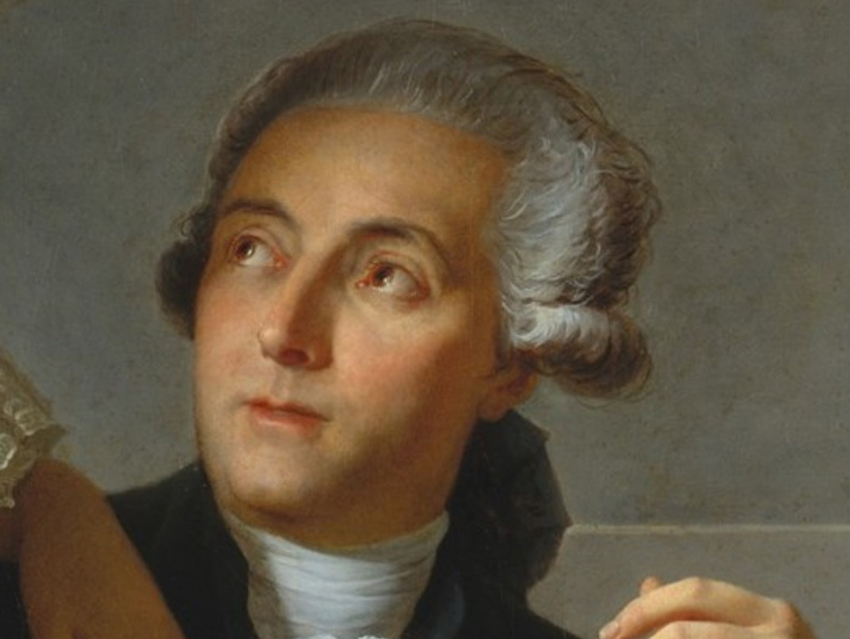Antoine-Laurent de Lavoisier was born on August 26, 1743, in Paris, France. He was born to wealthy parents and attended the highly regarded Collège Mazarin in Paris. He studied law, but also attended lectures on chemistry and physics. Rather than practicing law, Lavoisier performed scientific studies and was admitted to the Academy of Sciences in Paris in 1768.
At the time, chemistry was not as rigorous a science as it is today. Chemical elements and compounds were not yet well understood, and the phlogiston theory was still prevalent. The theory stated that the element phlogiston was contained in combustible materials and released during combustion. The composition of air was largely unknown; it was still considered an element by many. The conservation of mass during chemical reactions was not considered a universal law, and chemical experiments were seldom quantitative.
Lavoisier made breakthroughs in all of these topics and, thus, is often considered the father of modern chemistry. He performed experiments to disprove the phlogiston theory and developed the oxygen theory of combustion. Using careful experiments, he showed that metals gain weight during calcination (oxidation) instead of losing the weightless phlogiston, and that the resulting “calxes” (oxides) lost weight when reduced back to a metal.
An English colleague helped to determine what exactly is added and lost during combustion: In 1774, Joseph Priestley isolated oxygen, which he still considered a form of air deprived of phlogiston. During a visit to Paris, Priestley informed the Academy of Sciences of his discovery. Lavoisier repeated Priestley’s experiments and concluded that the type of air isolated by Priestley was reponsible for the weight gain during combustion. Lavoisier called it oxygen, Greek for “acid generator”, because the combustion products he had studied were acidic.
Lavoisier published the first modern list of chemical elements in 1789 [1]. It contained 33 elements, of which 23 are chemical elements in the modern sense. In the same publication, Traité élémentaire de chimie, which is considered the first modern chemistry textbook, he formulated the law of conservation of mass and gave an early definition for the chemical elements.
He had married Marie Anne Pierrette Paulze in 1771, and his wife took an interest in his scientific work. She helped him with his experiments, made entries in the laboratory notebook, and learned English in order to translate scientific memoirs.
Lavoisier was a member of several aristocratic councils and held shares in the so-called Ferme Générale, which collected taxes for the government—often quite ruthlessly. When the French revolution became more radical, turning into the “Reign of Terror“, privileged individuals and noblemen such as Lavoisier were particularly at risk. 28 members of the Ferme Générale, which had become a symbol of inequality, were arrested and sentenced to death by guillotine. Antoine Lavoisier was beheaded on May 8, 1794.
Antoine Lavoisier is the answer to Guess the Chemist (89).
References
- [1] Traité Élémentaire de Chimie,
Antoine Lavoisier,
Paris, 1789.
Sources
- The Chemical Revolution of Antoine-Laurent Lavoisier: International Historic Chemical Landmark,
American Chemical Society (ACS),
http://www.acs.org/content/acs/en/education/whatischemistry/landmarks/lavoisier.html (accessed May 2019). - Antoine Lavoisier,
Arthur L. Donovan,
Encyclopædia Britannica,
https://www.britannica.com/biography/Antoine-Lavoisier (accessed May 2019).
Selected Publications
- Essays Physical and Chemical,
Antoine Lavoisier,
Joseph Johnson, London, UK, 1776. - Essays, on the Effects Produced by Various Processes On Atmospheric Air; With A Particular View To An Investigation Of The Constitution Of Acids,
Antoine Lavoisier,
Warrington, London, UK, 1783. - Réflexions sur le phlogistique, pour servir de suite à la théorie de la combustion et de la calcination (Reflections on phlogiston),
Antoine Lavoisier,
read to the Académie Royale des Sciences over two nights, 28 June and 13 July 1783. - A Dictionary of the New Chymical Nomenclature,
Louis Bernard Guyton de Morveau, Antoine Lavoisier, Claude-Louis Bertholet, Antoine de Fourcroy,
James St. John, London, UK, 1788.




